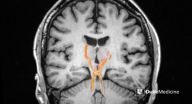High levels of moral reasoning correspond with increased gray matter in brain
Research from Penn scientists and business scholars aims to link moral reasoning with brain architecture
2015-06-03
(Press-News.org) PHILADELPHIA - Individuals with a higher level of moral reasoning skills showed increased gray matter in the areas of the brain implicated in complex social behavior, decision making, and conflict processing as compared to subjects at a lower level of moral reasoning, according to new research from the Perelman School of Medicine and the Wharton School of the University of Pennsylvania in collaboration with a researcher from Charité Universitätsmediz in Berlin, Germany. The team studied students in the Masters of Business Administration (MBA) program at the Wharton School. The work is published in the June 3rd edition of the journal PLOS ONE.
Moral development research pioneered by psychologist Lawrence Kohlberg in the mid-20th century shows that people progress through different stages of moral reasoning as their cognitive abilities mature. Neuroscience has recently reinvigorated moral psychology by introducing new methods for studying moral decision-making. However, no study to date has quantified brain structures supporting individual stages of moral reasoning.
"To investigate this question, we employed a sample of MBA students ages 24 to 33, past the age at which structural brain maturation is complete, and tested their moral reasoning, then looked at the level of gray matter in the brains of a subset of subjects," said senior author Hengyi Rao, PhD, a research assistant professor of Cognitive Neuroimaging in Neurology and Psychiatry in the Perelman School of Medicine.
"MBA students were ideal candidates for this work, as the Wharton curriculum addresses issues of moral decision-making and reasoning," explained Diana Robertson, PhD, a professor of legal studies and business ethics at the Wharton School and an author of the study. "We aimed to investigate whether the stage of moral reasoning is reflected in structural brain architecture."
A total of 67 MBA students were administered the Defining Issue Test to determine which pattern of thought or behavior, known as cognitive schema, each student used when reasoning about moral issues. In it, students were presented with complex moral dilemmas such as medical assisted suicide and asked them to choose the relevance of each of 12 given rationales. Based on the results, subjects were then assigned to one of seven schema types which represent increasing levels of moral development. Students then underwent MRI scanning to investigate differences in gray matter volume between students who reached the post-conventional level of moral reasoning compared to those who have not reached that level yet.
Subjects also underwent personality testing and were placed into one of the following categories: neuroticism, extraversion, openness to experience, conscientiousness, and agreeableness. Analysis showed higher scores in openness to experience and lower scores in neuroticism for participants at the more advanced levels of moral development.
With regard to brain structure, the team observed increased gray matter in the prefrontal cortex in subjects who reached the post-conventional level of moral reasoning compared to those who are still at a pre-conventional and conventional level. In other words, gray matter volume was correlated with the subject's degree of post-conventional thinking.
"This research adds an investigation of individual differences in moral reasoning to the expanding landscape of moral neuroscience," Rao said. "The current findings provide initial evidence for brain structural difference based on the stages of moral reasoning proposed by Lawrence Kohlberg decades ago. However, further research will be needed to determine whether these changes are the cause or the effect of higher levels of moral reasoning."
INFORMATION:
Penn Medicine is one of the world's leading academic medical centers, dedicated to the related missions of medical education, biomedical research, and excellence in patient care. Penn Medicine consists of the Raymond and Ruth Perelman School of Medicine at the University of Pennsylvania (founded in 1765 as the nation's first medical school) and the University of Pennsylvania Health System, which together form a $4.9 billion enterprise.
The Perelman School of Medicine has been ranked among the top five medical schools in the United States for the past 17 years, according to U.S. News & World Report's survey of research-oriented medical schools. The School is consistently among the nation's top recipients of funding from the National Institutes of Health, with $409 million awarded in the 2014 fiscal year.
The University of Pennsylvania Health System's patient care facilities include: The Hospital of the University of Pennsylvania -- recognized as one of the nation's top "Honor Roll" hospitals by U.S. News & World Report; Penn Presbyterian Medical Center; Chester County Hospital; Penn Wissahickon Hospice; and Pennsylvania Hospital -- the nation's first hospital, founded in 1751. Additional affiliated inpatient care facilities and services throughout the Philadelphia region include Chestnut Hill Hospital and Good Shepherd Penn Partners, a partnership between Good Shepherd Rehabilitation Network and Penn Medicine.
Penn Medicine is committed to improving lives and health through a variety of community-based programs and activities. In fiscal year 2014, Penn Medicine provided $771 million to benefit our community.
ELSE PRESS RELEASES FROM THIS DATE:
2015-06-03
Researchers have analysed the genomes of thousands of women in the UK and the Netherlands to measure the extent to which a woman's genes play a role for when she has her first baby and how many children she will have. Significantly, they have found that some women are genetically predisposed to have children earlier than others, and conclude that they have passed down their reproductive advantage to the next generation. They also find, however, that while modern women who were born in the 20th century might be expected to have babies even earlier than previous generations ...
2015-06-03
WYNNEWOOD, PA--June 3, 2015--a study led by Ellen Heber-Katz, PhD, of the Lankenau Institute for Medical Research (LIMR), part of Main Line Health (MLH), shows that a primordial form of energy production that still exists in mammals can be harnessed to achieve spontaneous tissue regeneration in mice, without the need for added stem cells. The study findings were reported in the June 3, 2015, issue of Science Translational Medicine, a peer-reviewed journal of the American Association for the Advancement of Science. Key collaborators in the study, which was supported by grants ...
2015-06-03
A lot of problems, associated with the mixing of the liquid in the microchannels, could be solved via proper organization of the inhomogeneous slip on the walls of these channels. This is the conclusion made by the joint group of Russian and German scientists lead by Olga Vinogradova, who is a professor at the M.V. Lomonosov Moscow State University and also a head of laboratory at the A.N. Frumkin Institute of Physical chemistry and Electrochemistry of the Russian Academy of Sciences. The article describing their theory was published in the latest issue of the journal ...
2015-06-03
Scientists are beginning to unwrap the biology behind why some people are more prone to major depression and other psychiatric disorders than others when experiencing stressful life events. The researchers found that cellular activity in response to stress hormone receptor activation differs from individual to individual. The study, led by Janine Arloth, Ryan Bogdan, and Elisabeth Binder at the Max Planck Institute of Psychiatry in Germany, also shows that the genetic variations underlying this difference in stress response correlate with dysfunction in the amygdala, a ...
2015-06-03
This news release is available in German. Scientists at the German Center for Neurodegenerative Diseases (DZNE) and the University of Bonn led by Prof. Stefan Remy report on this in the journal "Neuron". Their investigations give new insights into the workings of spatial memory. Furthermore, they could also help improve our understanding of movement related symptoms associated with Parkinson's disease.
In a familiar environment our movements are purposeful. For example, if we leave our office desk for a coffee break, we naturally follow a predefined route that has ...
2015-06-03
This news release is available in German.
Contaminated samples have evidently created some confusion in the timetable of life. On the basis of ultra-clean analyses, an international team, including scientists from the Max Planck Institute for Biogeochemistry, has disproved supposed evidence that eukaryotes originated 2.5 to 2.8 billion years ago. In contrast to prokaryotes such as bacteria, eukaryotes have a nucleus. Some researchers thought they had discovered molecular remnants of living organisms in rock samples up to 2.8 billion years old. However, as the ...
2015-06-03
A team of New York University neuroscientists has determined how a pair of growth factor molecules contributes to long-term memory formation, a finding that appears in the journal Neuron.
"These results give us a better understanding of memory's architecture and, specifically, how molecules act as a network in creating long-term memories," explains the paper's senior author, Thomas Carew, a professor in NYU's Center for Neural Science and dean of NYU's Faculty of Arts and Science. "More importantly, this marks another step toward elucidating the intricacies of memory ...
2015-06-03
DURHAM, N.C. - Scientists at Duke Medicine have produced a 3-D map of the human brain stem at an unprecedented level of detail using MRI technology.
In a study to be published June 3 in Human Brain Mapping, the researchers unveil an ultra high-resolution brain stem model that could better guide brain surgeons treating conditions such as tremors and Parkinson's disease with deep brain stimulation (DBS).
The new 3-D model could eliminate risky trial-and-error as surgeons implant electrodes -- a change akin to trading an outdated paper road atlas for a real-time GPS.
"On ...
2015-06-03
An international team of scientists led by Cardiff University researchers has provided the strongest evidence yet of what causes schizophrenia - a condition that affects around 1% of the global population.
Published today (17:00BST, 03/06/2015) in the journal Neuron, their work presents strong evidence that disruption of a delicate chemical balance in the brain is heavily implicated in the disorder.
In the largest ever study of its kind, the team found that disease-linked mutations disrupt specific sets of genes contributing to excitatory and inhibitory signalling, ...
2015-06-03
A large majority of Americans--including gun owners--continue to support stronger policies to prevent gun violence than are present in current federal and most state law, according to a new national public opinion survey conducted by researchers with the Johns Hopkins Center for Gun Policy and Research at the Bloomberg School of Public Health.
The survey is a follow-up to one conducted by the same researchers in early 2013, shortly after the shooting at the Sandy Hook Elementary School in Newtown, Connecticut that left 26 dead.
The results are published online in Preventive ...
LAST 30 PRESS RELEASES:
[Press-News.org] High levels of moral reasoning correspond with increased gray matter in brain
Research from Penn scientists and business scholars aims to link moral reasoning with brain architecture


